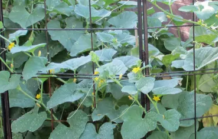Life gives us challenges! Some challenges are good for us but then there are lawn weeds. One of these weeds is yellow nutsedge! Yellow nutsedge is a relatively common problem in lawns, especially in wet years or in lawns with irrigation. Although it looks much like a grass, it is a sedge. Unlike grasses, sedges have triangular stems, and the leaves are three-ranked instead of two-ranked, which means the leaves come off the stems in three different directions. Yellow nutsedge is pale green to yellow and grows rapidly in the spring and early summer. Because of this rapid shoot growth, it sticks up above the rest of the lawn only a few days after mowing. This weed is a good indicator of poor drainage, but it can be introduced into well-drained sites through contaminated topsoil or nursery stock.
Nutsedge is less competitive in a dense, healthy lawn than in an open, poor lawn. Nutsedge is difficult to control culturally as it produces numerous tubers that give rise to new plants. Pulling nutsedge will increase the number of plants because dormant tubers are activated. However, it is possible to control nutsedge by pulling, but you must be very, very persistent. If treating with an herbicide, leave the nutsedge plants undisturbed so the herbicide can be maximally translocated to the roots and tubers. Several herbicides are available for nutsedge control. Products with halosulfuron and certain products with sulfentrazone are most effective.
Halosulfuron
Nufarm Prosedge
Gowan SedgeHammer +
Sulfentrazone
Ortho Nutsedge Killer for Lawns
Sulfentrazone + Prodiamine
Fertilome Weed-Out Nutsedge Control
Bonide Sedge Ender
The first application should go down in late spring to early summer. Applying later may allow tubers to develop which will not be well controlled. Repeat applications later in the season and in later years may be needed to obtain complete control.




